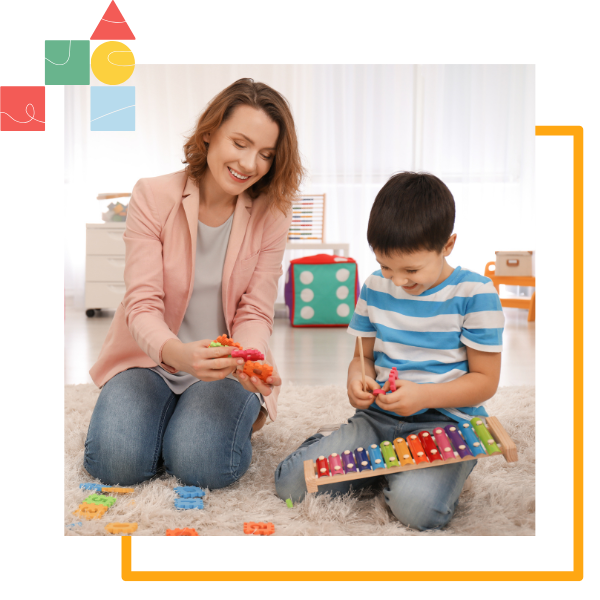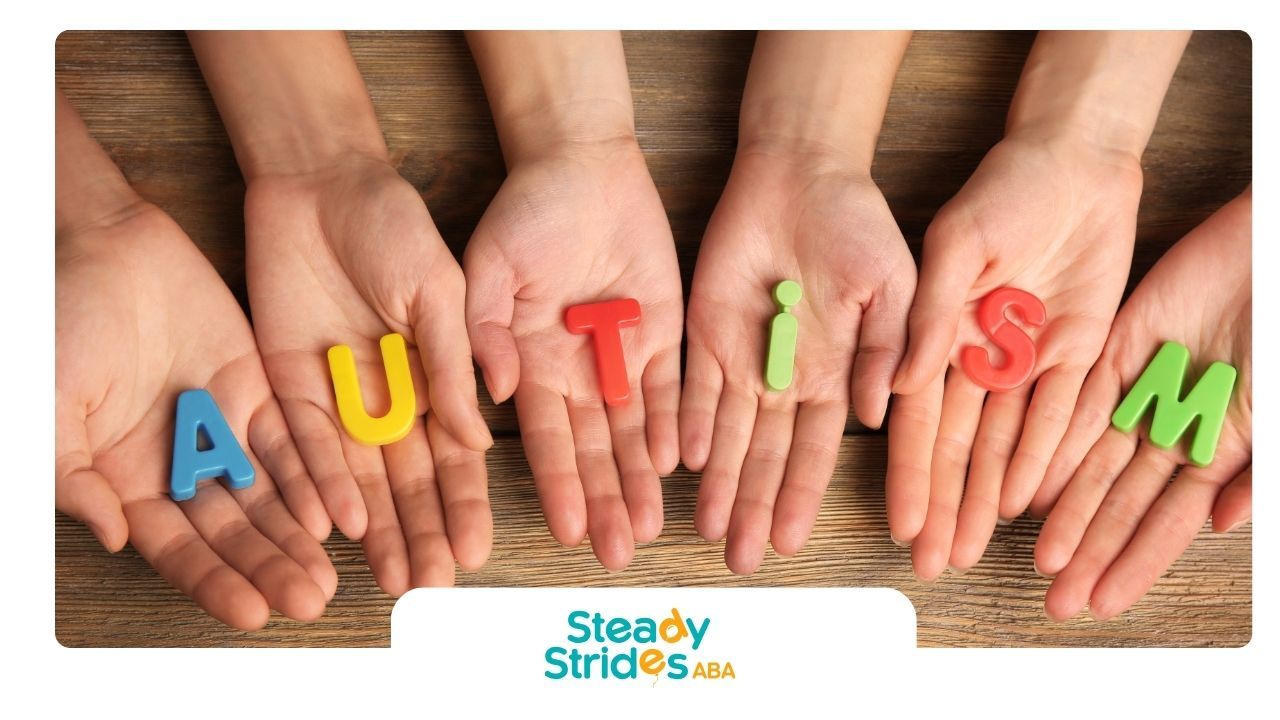Empathy is a concept that resonates deeply with all of us. It’s the bridge that connects us to others' feelings, allowing us to understand and share in their emotional experiences. But when it comes to autism, empathy can look a little different—though no less meaningful. Autistic individuals often experience emotional sensitivity in unique ways, challenging common misconceptions about their capacity for empathy.
In this article, we’ll explore the complexities of empathy in autism, breaking down myths and highlighting the strengths that come with neurodiverse emotional responses. Whether you're a parent, caregiver, or simply curious, understanding these nuances is key to fostering a more inclusive and supportive environment.
Defining Empathy in the Context of Autism
Empathy generally refers to the ability to understand and share the feelings of others. In the context of autism, empathy can be viewed through different lenses. Autistic individuals may experience empathy in unique ways that differ from neurotypical individuals.
There are two primary types of empathy:
- Cognitive Empathy: Understanding someone else's perspective or emotions intellectually.
- Affective Empathy: Feeling or sharing the emotional experience of another.
Autistic individuals may excel in cognitive empathy while having varying levels of affective empathy. This means they can comprehend others' feelings but may not always respond in ways that are expected.
Common Misconceptions About Empathy in Autism
Many misconceptions surround the relationship between autism and empathy. Some people believe that autistic individuals lack empathy altogether. This belief is unfounded and overlooks the complexity of their emotional experiences.
Here are some common misconceptions:
| Myth | Facts |
|---|---|
| Autistic individuals have no empathy | Many autistic people experience empathy but might express it differently. |
| All autistic individuals struggle with emotional understanding | Emotional sensitivity varies widely among autistic individuals. |
| Empathy means only feeling sad for others | Empathy encompasses a range of emotional responses, including joy and compassion. |
Understanding these misconceptions is crucial for fostering an inclusive environment for autistic individuals. Emphasizing the diverse expressions of empathy can lead to better emotional connections and support for everyone involved.
The Connection Between Autism and Empathy
Understanding the relationship between autism and empathy is essential for parents, caregivers, and educators. Autism is often characterized by diverse emotional responses and expressions of empathy.
Neurodiversity and Empathy
Neurodiversity recognizes that variations in brain function and behavioral traits are natural and valuable. Regarding empathy, individuals on the autism spectrum may experience and express empathy differently compared to neurotypical individuals.
Each individual’s response to emotional stimuli can vary widely. Some may have heightened emotional sensitivity, while others might express empathy in unique ways.
Below is an illustration of typical empathy responses among neurodiverse individuals.
- Heightened Sensitivity: Strong emotional reactions to others' feelings
- Unique Expression: Different ways of showing care or concern
- Social Understanding: Variable in recognizing social cues
Emotional Sensitivity in Autism
Emotional sensitivity is common among those with autism. This sensitivity can manifest as an awareness of emotions, both in themselves and in others. However, interpreting and responding to these emotions can present challenges.
Individuals may react strongly to sensory input, leading to intense feelings. This can result in a profound emotional experience, which may not align with traditional expressions of empathy. The following table outlines common emotional sensitivities and their potential impacts.
| Sensitivity Area | Impact on Emotional Experience |
|---|---|
| Sensory Overload | Heightened emotions, stress, and anxiety |
| Difficulties with Social Cues | Misunderstanding others' emotions |
| Overwhelming Environments | Emotional exhaustion and withdrawal |
Understanding these dynamics can help parents, caregivers, and educators nurture empathy and emotional development in autistic individuals. Recognizing how emotional sensitivity influences their interactions can foster more tolerant and supportive environments.
Impact of Emotional Sensitivity on Autistic Individuals
Emotional sensitivity can significantly influence an autistic individual's daily experiences. For some, it may lead to challenges in social interactions, heightened anxiety, or difficulty in coping with change. These factors can create barriers to communication and relationships with peers and family.
- Social Interaction: Difficulty interpreting social cues and responding appropriately.
- Anxiety Levels: Increased feelings of stress in unpredictable or overstimulating environments.
- Coping Mechanisms: Varying degrees of success in managing emotional responses to stimuli.
By recognizing and understanding these dynamics, parents, caregivers, and educators can create environments that cater to the emotional needs of autistic individuals, fostering greater well-being and personal growth.
Recognizing Emotional Triggers
Understanding emotional triggers is essential for helping autistic individuals manage their emotional sensitivity. Triggers can lead to heightened emotional responses. Recognizing these triggers can empower parents, caregivers, and educators to provide better support.
Common Triggers for Emotional Sensitivity
Several factors can act as emotional triggers for autistic individuals. Here are some common ones:
- Sensory Overload: Loud noises, bright lights, strong smells.
- Social Situations: Crowds, unfamiliar people, unexpected changes in routine.
- Emotional Stressors: Conflicts with peers, high-pressure situations, disappointment.
- Environmental Changes: Moving to a new home, changes in school routines, weather changes.
Ways to Identify and Understand Triggers
Identifying emotional triggers requires observation and communication. Here are some methods for understanding what may trigger emotional sensitivity:
- Observe Behavior Changes: Notice any changes in behavior, such as increased anxiety, withdrawal, or outbursts. Keeping a log can help identify patterns over time.
- Talk to the Individual: Engage in open conversations to explore their feelings and experiences. They may provide insight into what situations make them feel overwhelmed or upset.
- Create a Trigger Chart: Develop a chart where you can record specific occurrences and responses. This will help in recognizing correlations between triggers and emotional responses.
- Consult with Professionals: Seek insights from therapists or counselors who specialize in autism. They may offer strategies and viewpoints on identifying emotional triggers.
- Involve Peers: If appropriate, involve friends or peers to understand triggers better during social interactions. They might observe things that are less obvious to adults.
By recognizing these emotional triggers, support networks can be established to enhance the emotional well-being of autistic individuals. This foundation enables a more tailored and effective approach to managing autism emotional sensitivity.
Coping Strategies for Emotional Sensitivity
Emotional sensitivity can be challenging for autistic individuals and those who support them. Developing effective coping strategies can make a significant difference in handling these sensitivities.
Self-Regulation Techniques
Self-regulation involves recognizing and managing one's emotions and reactions. Various techniques can help autistic individuals gain better control over their emotional responses.
- Deep Breathing: Taking slow, deep breaths can help calm anxiety and stress. Focus on inhaling through the nose and exhaling through the mouth.
- Mindfulness: Practicing mindfulness helps individuals stay present. Techniques include focusing on the senses or observing thoughts without judgment.
- Visual Supports: Using charts or visual reminders can assist in recognizing and managing feelings. A feelings chart can help identify emotions more easily.
- Breaks: Taking short breaks during overwhelming situations allows individuals to regroup and regain composure.
Inclusive Perspectives on Empathy
Understanding the unique experiences of autistic individuals regarding empathy is essential. This section will explore the challenges they face as well as the strengths and distinct ways they express empathy.
Empathy Challenges Faced by Autistic Individuals
Many autistic individuals encounter difficulties when it comes to understanding and expressing empathy. These challenges can stem from varying levels of emotional sensitivity and differences in social interaction styles. Recognizing these challenges can help parents, caregivers, and educators provide better support.
- Difficulty in Reading Emotions: Some autistic individuals may struggle to interpret nonverbal cues such as facial expressions and body language.
- Overwhelm in Social Situations: Social settings can be overwhelming, leading to challenges in engaging with others emotionally.
- Challenges with Perspective-Taking: Understanding another person's viewpoint can be difficult, affecting their ability to empathize in certain situations.
Strengths and Unique Expressions of Empathy in Autism
Despite the challenges, many autistic individuals display unique strengths and ways of showing empathy that may go unrecognized. These strengths can contribute positively to their interactions with others.
| Expression of Empathy | Description |
|---|---|
| Honesty and Authenticity | Autistic individuals may express their empathy through straightforward communication, reflecting genuine feelings and thoughts. |
| Deep Emotional Connections | Many autistic individuals can form profound emotional bonds with close friends and family, exhibiting loyalty and care. |
| Unique Perspectives | Their distinct viewpoints can lead to innovative solutions to problems and a deeper understanding of specific topics. |
Acknowledging both the challenges and strengths of empathy in autistic individuals allows for a more holistic understanding of their experiences. This knowledge supports the development of inclusive environments that encourage understanding and acceptance.
Nurturing Empathy in Autistic Individuals
Nurturing empathy in autistic individuals involves understanding their emotional development and enhancing their communication skills. This can lead to improved social interactions and connections with others.
Supporting Emotional Development
Supporting emotional growth is essential for helping autistic individuals recognize and express their feelings. It involves providing a safe environment where emotions can be explored, understood, and validated.
Strategies for supporting emotional development:
- Emotion Identification: Help them label their emotions through visuals or charts, such as emoji faces.
- Role-Playing: Engage in role-playing scenarios to practice recognizing and responding to feelings in different situations.
- Storytelling: Use stories to illustrate emotional situations and encourage discussions about feelings and responses.
- Mindfulness Activities: Introduce mindfulness practices to promote self-awareness and emotional regulation.
Building Empathy Skills Through Communication
Effective communication is vital for developing empathy. Encouraging clear expression of thoughts and emotions helps autistic individuals understand both their feelings and those of others.
Methods for building empathy skills:
- Visual Supports: Utilize pictures or social stories that depict various social situations and emotional responses.
- Open Dialogue: Foster discussions about feelings and reactions in daily situations to promote understanding.
- Group Activities: Organize group activities that require cooperation and empathy, such as team games or collaborative projects.
- Feedback Sessions: Encourage regular feedback about social interactions, guiding them to reflect on how their actions affect others.
By integrating support for emotional development and communication skills, parents, caregivers, and educators can foster empathy in autistic individuals, helping them build meaningful connections with others.
Conclusion
Understanding emotional sensitivity and empathy in autistic individuals opens doors to greater connection and compassion. By recognizing the unique ways neurodiverse minds experience and express emotions, we can better support their journey.
If you're looking to foster emotional development and build stronger connections, consider Steady Strides ABA’s personalized home-based and center-based ABA therapy services. Our compassionate approach helps autistic individuals thrive by focusing on their unique needs and strengths, creating a supportive environment for emotional growth. Let’s walk this path together, embracing every step toward a more empathetic future.
Contact us for a consultation!
FAQs
Why is emotional sensitivity common in autism?
Emotional sensitivity in autism often stems from heightened sensory experiences and unique ways of processing emotions, which can lead to intense emotional reactions.
Do autistic individuals experience empathy differently?
Yes, autistic individuals may express empathy uniquely, often excelling in cognitive empathy but experiencing affective empathy in ways that might differ from neurotypical expectations.
How can I support an autistic person with emotional sensitivity?
Support involves recognizing emotional triggers, using self-regulation techniques, and fostering open communication to help autistic individuals manage their emotional responses.













